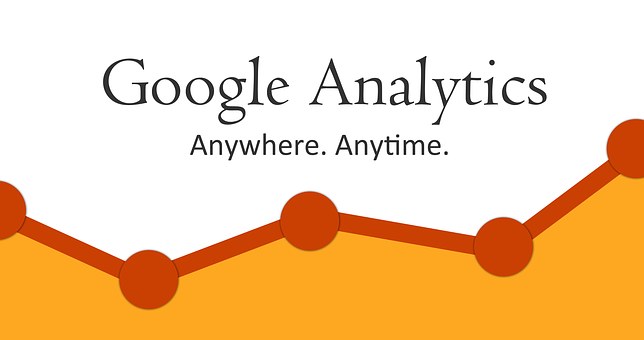If you are in the B2B space, you know that businesses are struggling with complex, rapidly shifting sales and market intelligence environment – data that is scattered and in silos, little visibility of future trends and an approach to demand generation that is as unsophisticated as a shotgun spray.
On the other hand, modern big data analytics is changing the way business can target enterprise customers, making it increasingly a science, driven by insights culled from millions of data points across diverse areas. And the traditional sales funnel – starting with a large cohort of probables and whittling it down to a handful of promising leads by trial and error – is dead.
The digital revolution that is sweeping the world has awakened the modern enterprise to the uses of information that span the entire spectrum of transactions and across supply chains: recruitment, expansion plans, fund raising, marketing activities, regulatory changes sales wins, technology transformations and so on.
The old, fairly passive, sales funnel – a pillar of traditional marketing theory – is dead, and in its place is a multi channel, multi level engagement exercise involving avenues of digital discovery and products and services that change, literally according to the needs of the enterprise buyer.
Top decision makers in the enterprise further have a legitimate expectation today that the information, and the capability to follow through on a decision to invest in a product or solution will be cloud-enabled, and will available on a mobile device – think the CEO’s iPad – anytime, anywhere.
In addition, the dull-sounding processes of ‘after-sales services’ are rapidly giving way to proactive ‘after-sales engagement’ models where a digitally empowered enterprise can become your brand’s reference customer, including on social media platforms, or go the other way and contribute to destroying your product’s prospects.
Businesses that are getting this right have recognized that the digital world has resulted in enterprises looking at solutions that are out of the box, products that the chief information officer didn’t even know existed until another CxO, say the chief marketing officer, decided it was the best one for his/her department’s needs.
The digital experience is changing what the enterprises need, but all this complexity doesn’t mean the modern enterprise has become enamored of complex purchasing processes and decisions. In fact the plethora of information available and the never-ending promotions bombarding the CIO means he’s left with a craving for simplicity of user experience.
The ever increasing set of choices also means businesses have a dogfight on their hands to match their enterprises’ expectations: “Nearly three quarters of companies believe their budget for customer insights is too low, according to a recent survey of almost 700 senior executives we completed,” wrote David Edelman and Francesco Banfi from McKinsey & Company.
“Even more disturbing, only 6 percent of companies surveyed understand customer needs extremely well while 45 percent of companies admit they have limited to no understanding on how their customers interact with them digitally,” Edelman and Banfi add.
They recommend that every business learn to visualize changing sales funnel, the customer decision journey, from the earliest act of looking for the very first set of options to what happens well after a product has been bought: this will reveal strengths and weaknesses that businesses can act on.
Big data analytics can be a very powerful tool in bringing rigor to this visualization and in acting on the insights the visualization throws up.
For instance, YODA- Crayon’s Watson powered ‘Sales Concierge’, can boost B2B sales and demand generation, by providing highly personalized business profiles and indicators on companies and markets.
Crayon’s YODA captures and connects data about each individual company from a diverse set of areas such as recruitment, expansion plans, fund raising, marketing activities, regulatory changes, sales wins, technology transformations and so on.
YODA will then combine all this data into various events that will point to what the company is all about. Now imagine this exercise repeated over and over for millions companies around the world – Crayon’s database includes 2.5 million enterprises and growing.
The result is valuable insights into what the business interests are of each of these companies. Next, what if these companies could be mapped together in some way that links their business interests. Crayon’s proprietary algorithms do that and the result is a massive Business Interest Graph.
Matching these business interests with the benefits of a B2B product would yield a far richer and relevant set of potential customers than the shotgun approach, thereby directly having a positive impact on sales.
For instance, in the case of an online advertising space, if your product helps enterprise customers enhance their online presence, build an online community of end-user customers and boost web traffic, Crayon’s YODA could match your sales goals with enterprises that are highly likely to benefit the most from using the product.
It would help you discover hidden opportunities and prioritize those opportunities that are better prospects. In combination with your own enterprise data about your customers, Crayon’s YODA will fine tune your set of prospects even further, making your approach unique and relevant to your company and product, irrespective of competition.

The data analytics of substance abuse & treatment
The...









![7 data-driven ways to optimize your online store for mobile [Infographic]](https://crayondata.ai/wp-content/uploads/2019/11/optimize-1.jpg)


![Top tips and tricks to improving your customer experience [Infographic]](https://crayondata.ai/wp-content/uploads/2019/01/customer-journey-1.jpg)









